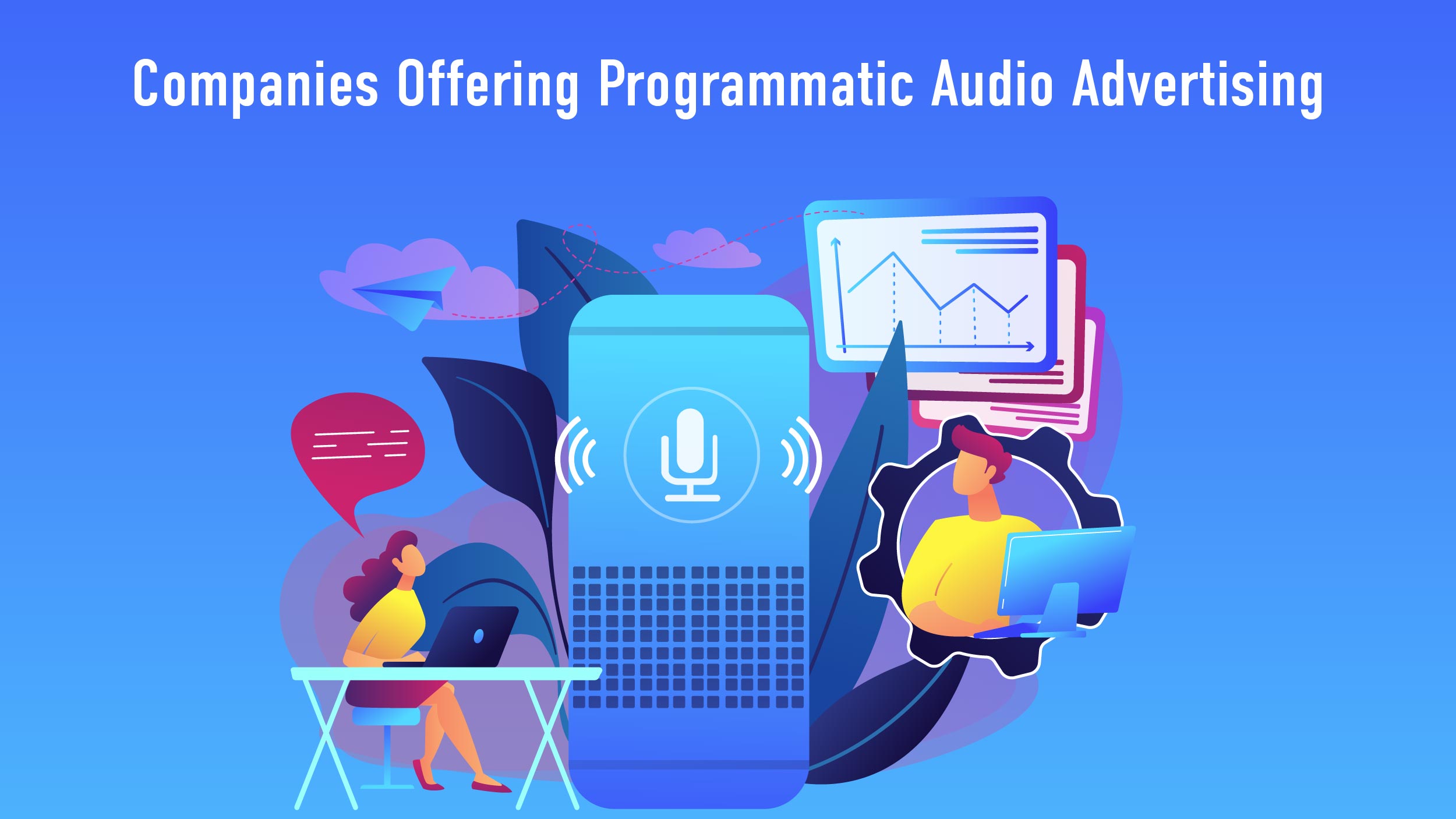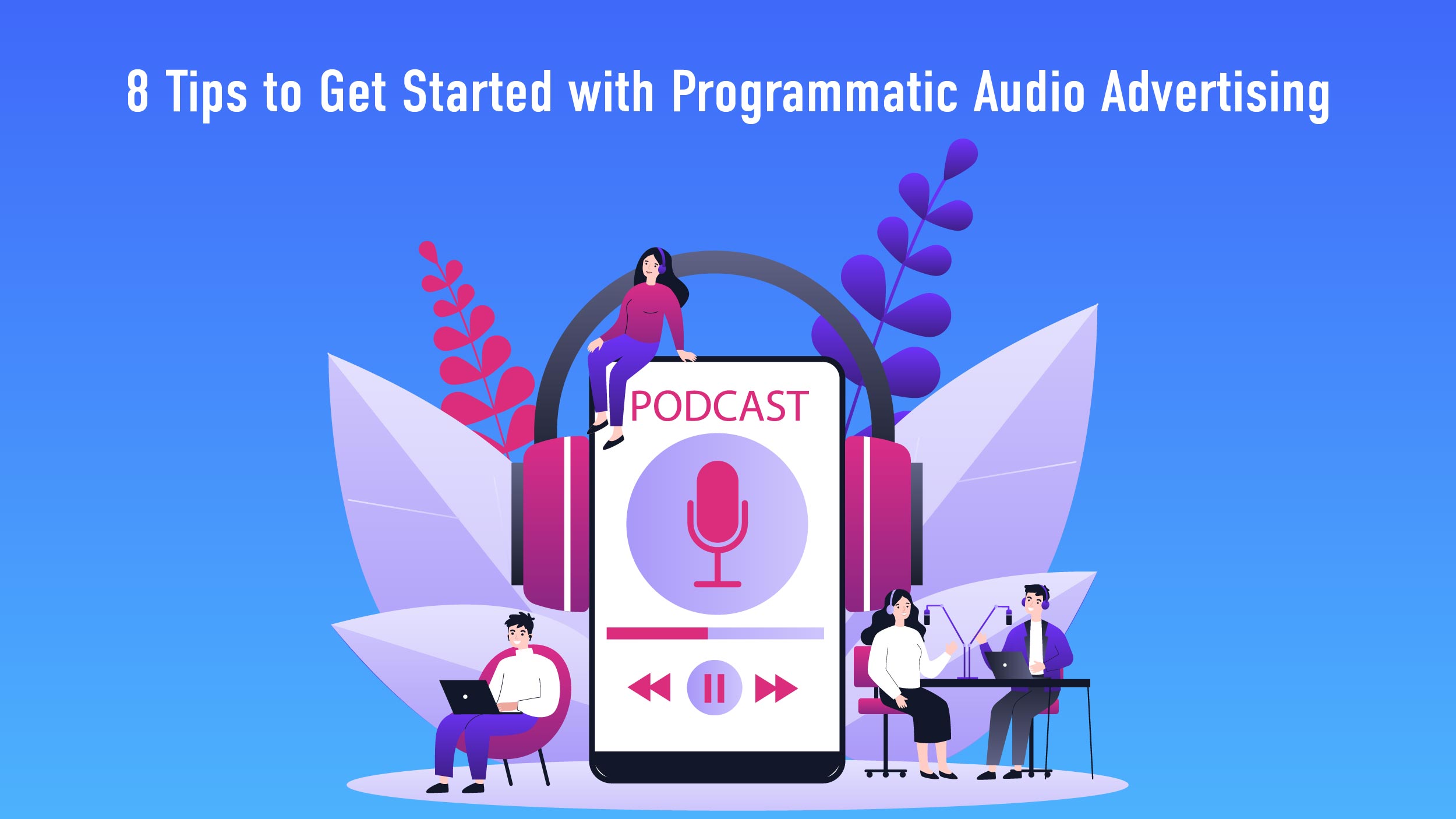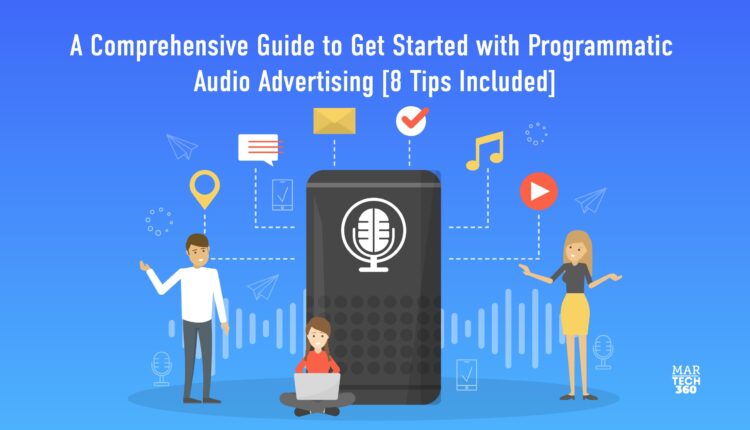Programmatic advertising emerged in 1993 as a means of automating the ad-delivery process, originating from a basic banner on Wired.com. Digital media purchases, such as online display advertisements, video ads, search ads, social media ads, and sophisticated TV, and outdoor ads, are now commonly made using this creative approach to manage online inventory and media procurement. Recent advancements indicate that programmatic audio advertising might become more popular shortly. Without further ado, let’s understand everything about it.
What is Programmatic Audio Advertising?
Programmatic audio advertising is the automated buying and selling of ads within audio content like podcasts, digital radio, and music streaming services. It utilizes algorithmic buying technology to streamline ad selling and insertion, allowing advertisers to reach their target audience through relevant audio ads.
How Does Programmatic Audio Advertising Work?
Programmatic audio advertising involves bidding, buying, and campaign execution, focusing on audio content. Advertisers convey their message through audio ads inserted into the content being consumed by the audience. These ads can be streamed on various devices, including desktops, mobile devices, and smart speakers.
Audio Programmatic Advertising on the Rise
Several major players explore or actively incorporate programmatic audio into their strategies. Notably, announcements from industry giants like Spotify, SoundCloud, Tune In, Pandora, and Google indicate a significant shift in the advertising landscape.
The growing interest in programmatic audio is influenced by broader changes within the advertising industry. These include the continuous optimization of advertising processes, the diminishing role of non-digital media, and the widespread transition to digital alternatives such as streaming TV, music services, and digital radio. Advertisers are strategically adapting to evolving audience behaviors, responding to the increasing popularity of podcast and music-streaming services.
Companies Offering Programmatic Audio Advertising
 Several companies have jumped into the world of programmatic audio advertising. In 2018, Google shared plans to introduce programmatic audio ads on platforms like Spotify, SoundCloud, Tune In, and Google Play Music. This allows brands to purchase ads using their DoubleClick Bid Manager.
Several companies have jumped into the world of programmatic audio advertising. In 2018, Google shared plans to introduce programmatic audio ads on platforms like Spotify, SoundCloud, Tune In, and Google Play Music. This allows brands to purchase ads using their DoubleClick Bid Manager.
Rubicon Project, an AdTech provider, also expressed interest in programmatic audio in 2018, foreseeing its potential growth. As media buyers become more familiar with measuring and tracking programmatic audio, it’s expected to become a standard practice.
SoundCloud has adapted to the changing landscape by integrating programmatic audio and video inventory into AppNexus’s marketplace. Similarly, Pandora, a major player in the music and podcast industry, launched its private audio marketplace, making it easier for advertisers to buy programmatically.
BBC, the renowned British broadcaster, partnered with podcast provider Acast to pioneer programmatic audio ads. These ads are exclusively shown to international podcast listeners, considering BBC’s status as a public broadcaster in the UK.
Programmatic integration for pre-recorded commercials emerged as a sensible way around BBC journalists’ incapacity to actively promote businesses. For instance, Acast locates listeners using automatic recognition. For listeners in the UK, this guarantees ad-free delivery; for listeners outside the UK, Acast dynamically inserts advertising based on context, device kind, location, time of day, and demographic information from third parties.
Also Read: Swipe Right for Engagement: The Impact of Interactive Social Media Posts
Benefits of Programmatic Audio Advertising
Programmatic audio advertising offers several benefits:
- Cross-Device Campaign Integration: Digital audio seamlessly integrates into cross-device campaigns, contributing to brand awareness and serving as part of the prospecting funnel alongside display, video, mobile, OOH (Out of Home), or CTV (Connected TV).
- Highly Engaged Audiences: Audio content provides an engaging and emotional experience for consumers. Ads that blend well with the content are more welcomed and effective. Nielsen reports that host-read ads boast a remarkable brand recall rate of 71%.
- Precise Targeting: Programmatic audio provides a comprehensive suite of targeting capabilities, including audience targeting, geo-targeting, and device targeting.
- Frequency Control: Advertisers can manage how often ads are served, reducing wasted impressions through effective frequency control.
- Data-Driven Decision Intelligence: By utilizing first-party data alongside mobile network data, advertisers can enhance the effectiveness and performance of their campaigns.
- Efficiency: Achieve maximum reach through focused targeting, efficient discovery, and strategic execution.
- Dynamic Creative Messaging: Programmatic audio enables the delivery of 360 binaural ads and the use of data and context for personalization. Studies indicate that dynamically personalized creative leads to a 52% uplift in ad recall and a 2.4x increase in conversions, on average.
- Real-Time Optimization: Advertisers can deliver creative content that targets, refines, and expands based on specific parameters to meet pre-established KPIs. This includes universal campaign management and setting filters for devices, frequency, and more.
- Reporting & Attribution: Gain insights into the entire customer journey, including audio activity, to optimize and attribute conversions effectively.
8 Tips to Get Started with Programmatic Audio Advertising
 Embarking on programmatic audio ads is a step-by-step process that can be both effective and straightforward. Here’s a digestible guide to get you started:
Embarking on programmatic audio ads is a step-by-step process that can be both effective and straightforward. Here’s a digestible guide to get you started:
- Understand Programmatic Audio Advertising: Start by understanding the fundamentals of programmatic audio ads. It’s about automating the buying, selling, insertion, and delivery of ads within audio content like podcasts, audiobooks, voice searches, and music streaming services.
- Clarify Your Advertising Goals: Define your advertising objectives. Whether it’s boosting brand awareness, driving website traffic, or generating leads, having clear goals will shape your programmatic audio ad campaigns.
- Pinpoint Your Target Audience: Identify your target audience based on demographics, interests, and behaviors. The programmatic audio ad offers precise targeting, ensuring your audio ads reach the right audience.
- Select a Suitable Platform: Choose a programmatic audio ads platform that fits your needs. Popular options include Spotify, Triton, AdsWizz, and TargetSpot. These platforms provide tools to plan, buy, and execute programmatic audio ad campaigns.
- Craft Compelling Audio Ads: Develop engaging and compelling audio ads tailored to your target audience. Consider the unique aspects of audio content and create ads that capture attention and convey your message effectively.
- Establish Your Budget: Determine your budget considering factors like ad placement, targeting options, and campaign duration. Begin with a budget aligned with your goals and adjust based on campaign performance.
- Continuous Monitoring and Optimization: Keep a close eye on your programmatic audio ad campaign’s performance. Track key metrics such as impressions, click-through rates, conversions, and ROI. Use this data to optimize your campaigns and make informed decisions for future ads.
- Professional Assistance Consideration: If you’re new to programmatic audio advertising or seek expert guidance, consider collaborating with a digital advertising agency or consulting industry professionals. Their insights can be invaluable in navigating the complexities of programmatic advertising.
Concluding Thoughts
By automatically purchasing and selling audio content advertisements, programmatic audio advertising offers advertisers a very effective way to connect with their target market. This technology simplifies the ad buying process and enables accurate targeting and campaign performance measurement. Advertisers may achieve their marketing objectives and produce captivating audio ads that connect with their target audience by keeping abreast of industry developments and best practices.


Comments are closed.